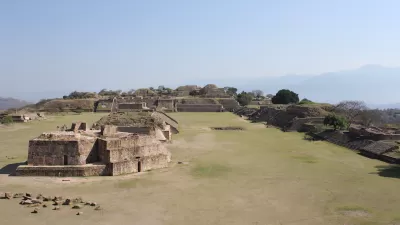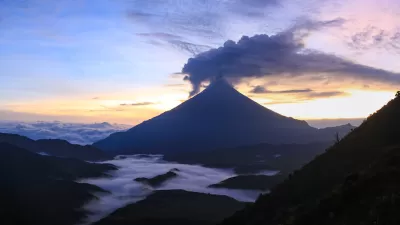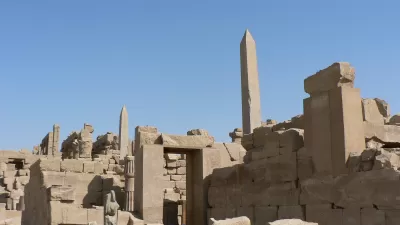Most developers dread finding archaeological remains. Normally it means months of delays and increased costs while archaeologists investigate the site. However, some savvy developers are turning archaeological finds into a marketing advantage.
Many developers "believe the discovery of bones will lead to the state or an Indian tribe seizing private land. Fearing that, some will probably order the bulldozers quietly to bury what they unearth."
"...Bloomington, a suburb of St George, has built a cul-de-sac around a huge boulder marked with petroglyphs-a model that will soon be followed by a developer near Salt Lake City. A site near Cortez, in Colorado, which is dotted with more than 200 Indian ruins, is being marketed as "America's first archaeological development": buyers can do their own excavations, but must bequeath what they find to a local museum. Perhaps the most extraordinary example is Mountain's Edge, a half-built suburb near Las Vegas, where an ersatz archaeological dig has been incorporated into a park. Clearly, if a site lacks history there is a need to invent it. In a fast-growing area where many buyers lack roots, a bit of local history may help sales."
As GPS and web-based maps proliferate, it becomes increasingly difficult to protect far-flung and lonely archeology sites from vandalism and theft. While "archaeology-themed suburbs" may be troubling to some, the "best chance of preserving America's archaeological heritage may be to surround it with houses."
FULL STORY: Grave goods

Planetizen Federal Action Tracker
A weekly monitor of how Trump’s orders and actions are impacting planners and planning in America.

Maui's Vacation Rental Debate Turns Ugly
Verbal attacks, misinformation campaigns and fistfights plague a high-stakes debate to convert thousands of vacation rentals into long-term housing.

Restaurant Patios Were a Pandemic Win — Why Were They so Hard to Keep?
Social distancing requirements and changes in travel patterns prompted cities to pilot new uses for street and sidewalk space. Then it got complicated.

In California Battle of Housing vs. Environment, Housing Just Won
A new state law significantly limits the power of CEQA, an environmental review law that served as a powerful tool for blocking new development.

Boulder Eliminates Parking Minimums Citywide
Officials estimate the cost of building a single underground parking space at up to $100,000.

Orange County, Florida Adopts Largest US “Sprawl Repair” Code
The ‘Orange Code’ seeks to rectify decades of sprawl-inducing, car-oriented development.
Urban Design for Planners 1: Software Tools
This six-course series explores essential urban design concepts using open source software and equips planners with the tools they need to participate fully in the urban design process.
Planning for Universal Design
Learn the tools for implementing Universal Design in planning regulations.
Heyer Gruel & Associates PA
JM Goldson LLC
Custer County Colorado
City of Camden Redevelopment Agency
City of Astoria
Transportation Research & Education Center (TREC) at Portland State University
Jefferson Parish Government
Camden Redevelopment Agency
City of Claremont





























